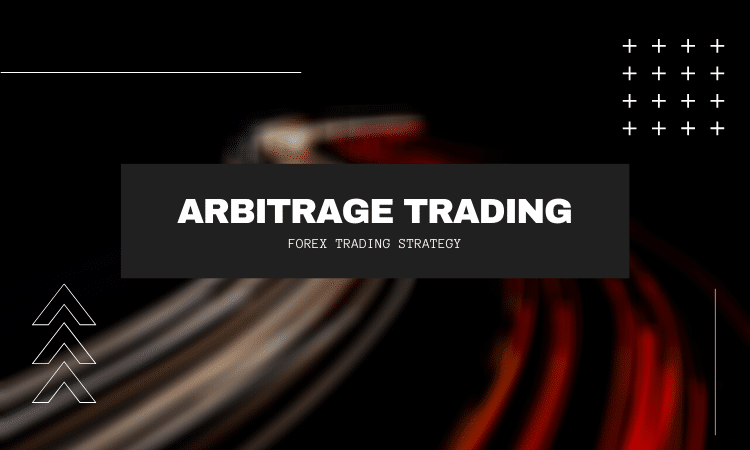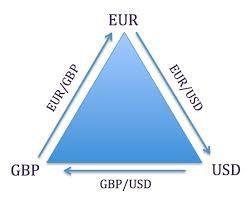Anticipating future price movements is not the only way people profit trading currency pairs in the forex market. Arbitrage is a low-risk forex trading strategy that traders deploy to take advantage of pricing inefficiencies in the trillion-dollar marketplace.
Forex Arbitrage Explained
Arbitrage is a forex trading strategy whereby traders take advantage of price discrepancies between remarkably similar financial instruments in different markets. In this case, a trader would buy an instrument and simultaneously sell an equivalent size of the same instrument in another market.
The trading strategy is made possible by the fact that products that are effectively the same trade in different markets and different forms. In the forex market, price inefficiencies occur whenever financial institutions price currency pairs differently.
In the stock market, large companies have their stocks listed in more than one exchange. While the stocks are usually expected to be priced the same, that is usually not the case in different exchanges. Likewise, arbitrageurs look to profit from these price discrepancies between exchanges. A trader can buy a currency pair in one institution and sell it simultaneously in another.
Traders moving to exploit the price inefficiencies in the market often result in the problem correcting itself. Likewise, traders should always be ready to act on such inefficiencies as quickly as possible. Besides, arbitrage trading requires real-time pricing quotes and the ability to act on them as fast as possible.
Many tools allow traders to identify pricing inefficiencies in the markets. Forex arbitrage calculator is one of the tools that provide arbitrageurs with real-time forex arbitrage opportunities. Third-parties and forex brokers usually sell the calculators.
Arbitrage Trading Strategies

Two Currency Arbitrage Play
The two currency arbitrage trading strategy entails trading the same financial instrument in two separate markets, offering different bid and ask prices. Consider a broker buying euros at $1.2100 and selling at $1.2200. Broker B, on the other hand, is buying Euro at $1.2300 and selling at $1.2400
A trader could buy euros from Broker A at the set price of $1.2200 and immediately sell the same to Broker B, which is buying the euros at $1.2300. A trader could net a quick $1,000 on completing the transactions before the discrepancy in pricing between the two brokers is corrected
Acting fast is the only way a trader would be guaranteed of netting profits quickly, given that as soon as more traders identify the discrepancy, forces of supply and demand often cause brokers to adjust their pricing.
Interest Rate Arbitrage Trading Strategy
The interest rate arbitrage strategy entails traders exploiting interest rate differential between two currencies. In this case, a trader can sell currency from a country with low-interest rates and invest the same in buying a country’s currency with a higher interest rate. Whenever the trader reverses the operation at a future date, he or she would end up receiving the net difference in interest paid between the two currencies.
Consider a EUR/USD whereby the Eurozone has a 4.8% interest rate while the U.S Dollar is pegged on a 3.4% interest rate in the U.S. A trader with $200,000 can convert the amount to euros, say at an exchange rate of $1.2560, to end up with €159,235.
To protect him or her against exchange rate risk-fluctuation, the trader can take out a forward contract that locks in the $1.2560 exchange rate on the EUR/USD pair.
The trader can then invest the €159,235 at the 4.8% interest rate for two years, resulting in €174,888. Exchanging the euros for dollars at the guaranteed $1.2560 exchange rate, the arbitrageur would end up with $219,659, resulting in a cool $19,659 in profits. Likewise, this is slightly more than a $13,000 profit that one would have got on investing the initial $200,000 in Europe at a 3.4% interest rate.
Triangular Arbitrage Strategy
The triangular arbitrage trading strategy involves traders trying to profit from price discrepancies between three currency pairs at three different banks. Consider EUR/USD with a $1.1200 exchange rate at bank A EUR/GBP with a $1.1800 exchange rate at bank B and GBP/USD with a $1.2300 exchange rate at bank C.

Consider A trader with $500,000. He or she could exchange the same amount for euros and conversely get €560,000 at bank A (multiplying $500,000 by 1.1200 exchange rate).
The trader could then go to Bank B and exchange the €560,000 to British Pounds, conversely end up with £474,576 (dividing €560,000 by 1.1800).
The trader could then go to Bank C and convert the £474,576 to Dollars ending up with $583,728 (multiplying £474,576 by 1.23).
In the end, the trader would end up with $83,372 in profits on completing the three transactions.
Arbitrage Trading Challenges
While price inefficiencies make it possible for traders to profit, transaction costs can pose significant challenges. Brokers and banks charge transactions, cost some in the form of spreads that could significantly eat into potential profits.
Also, some brokers forbid traders from engaging in arbitrage trading, especially when it is against them. Some brokers are also fond of backtesting trades to check if profits generated took advantage of pricing anomaly.
Arbitrage trading requires rapid execution if one is to profit from inefficiencies before the market rebalances. In the triangular forex arbitrage strategy, all three transactions ought to be executed instantly to take advantage of the real-time interest rate that often fluctuates. For this reason, most arbitrageurs rely on automated trading systems given their ability to identify arbitrage opportunities fast and execute them in real-time.
Advances in technology and high-frequency trading have made risk free arbitrage trading opportunities less common, especially for retail traders.
Bottom Line
Arbitrage is a trading strategy that allows traders to profit from market inefficiencies when it comes to financial instruments’ pricing. While the strategy offers a low-risk option of benefiting from pricing discrepancies, arbitrage opportunities are usually short-lived as markets often rebalance in no time. The use of automated trading systems can help traders capitalize on arbitrage opportunities before markets rebalance.